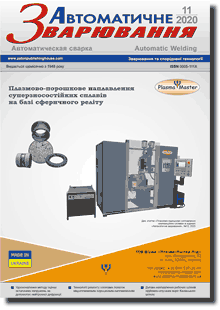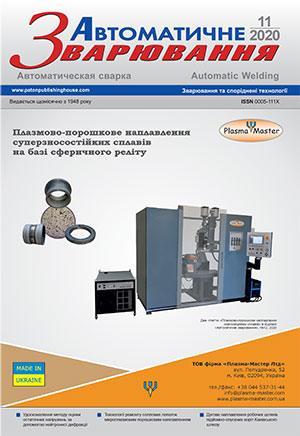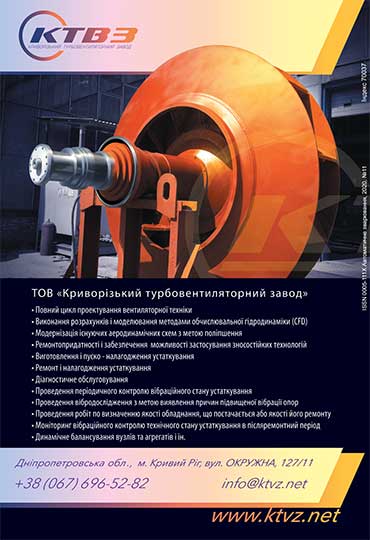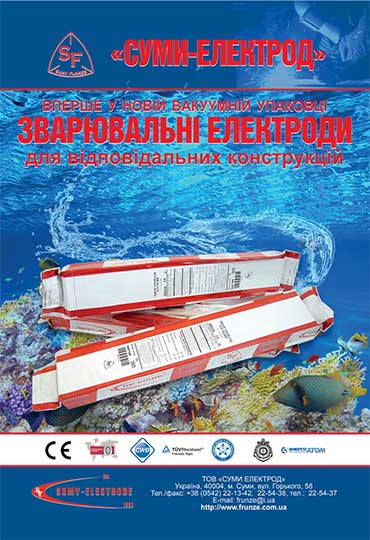| 2020 №11 (03) |
DOI of Article 10.37434/as2020.11.04 |
2020 №11 (05) |

"Avtomatychne Zvaryuvannya" (Automatic Welding), #11, 2020, pp. 20-26
Inside welds: advanced characterization of residual stresses by neutron diffraction
M. Rogante
Rogante Engineering Office, Contrada San Michele n. 61, 62012 Civitanova Marche, Italy. E-mail: main@roganteengineering.it
Welding processes involve often very high temperature gradients, which can induce elevated residual stresses (RS). It is essential, therefore, to know these RS, especially by determining them experimentally e.g. before and after thermal treatments. Neutron beam techniques contribute in general to the solution of important questions and problems related to the methodological restrictions of the analysis systems normally used: complementary to these investigation methods, they provide concrete and fundamental help to optimize the finished industrial product and increase its performance. Neutron diffraction, in particular, is a powerful tool to assess in a non destructive and non invasive way the RS status in materials and components of technological interest. In this paper, the basic theoretical aspects and some examples are reported, regarding the possible determination of RS by using neutron diffraction in different kinds of welded structures. 39 Ref., 7 Fig.
Keywords: residual stress, neutron diffraction, welded joints, advanced characterization
Received: 05.11.2020
References
1. Winholtz, R.A., Rogante, M. (2016) Residual Stresses: Macroand Microstresses. Reference Module in Materials Science and Materials Engineering. Elsevier, Oxford, 1-5. https://doi.org/10.1016/B978-0-12-803581-8.03038-12. Smith, D.J., Bouchard, P.J., George, D. Measurement and prediction of residual stresses in thick-section steel welds. The Journal of Strain Analysis for Engineering Design, 35, 4, 287-305. https://doi.org/10.1243/0309324001514422
3. Rogante, M., Battistella, P., Cesari, F. (2006) Hydrogen interaction and stress-corrosion in hydrocarbon storage vessels and pipelines weldings. International Journal of Hydrogen Energy, 31/5, 597-601. https://doi.org/10.1016/j.ijhydene.2005.05.011
4. Rogante, M., Lebedev, V.T., Kralj, S. et al. (2006) Neutron techniques for welding project methods development in nuclear/ traditional industrial application. Multidiscipline Modeling in Materials and Structures, 2, 4, 419-433. https://doi.org/10.1163/157361106778554824
5. Rogante, M., Cesari, F.G., Ferrari, G. (2009) Analytical method for residual stresses determination in thin welded joints. Ibid, 5, 3, 269-276. https://doi.org/10.1163/157361109789016998
6. Rogante, M., Cesari, F.G., Ferrari, G., Battistella, P. (2006) A simplified solution for the evaluation of residual weld stress. Welding International, 20, 9, 713-716. https://doi.org/10.1533/wint.2006.3635
7. Cesari, F.G., Ferrari, G., Molinari, V. et al. (2001) A simplified evaluation model of Residual Stresses distribution in weldings. Proc. 4th Eur. Conf. on welding, joining and cutting «EUROJOIN 4», Cavtat, Dubrovnik, Croatia, 24-26/05/01. S. Kralj and Z. Kožuh, Eds., Zagreb, Croatia, ISBN/ISSN 953-96454-0-9, pp. 251-256.
8. Stacey, A., Barthelemy, J.Y., Leggatt, R.H., Ainsworth, R.A. (2000) Incorporation of residual stresses into the SINTAP defect assessment procedure. Engineering Fracture Mechanics, 67, 6, 573-611. https://doi.org/10.1016/S0013-7944(00)00075-8
9. (2019) Guide to methods for assessing the acceptability of flaws in metallic structures, Report BS 7910:2019, British Standards Institution. ISBN 9780580520860, p. 535. https://shop.bsigroup.com/en/ProductDetail/?pid=000000000030369478&_ga=2.128792330.701546373.1576593016-1872050251.1562055730
10. Smith, S.D. (1991) A review of numerical modelling of fusion welding for the prediction of residual stresses and distortion. TWI Members Report 437/1991. https://www.twi-global.com/pdfs/industrial-member-reports/437-december.pdf
11. Rogante, M. (2011) Neutron techniques for developing engineering welding methods. Welding International, 25, 10, 754-761. https://doi.org/10.1080/09507116.2011.581347 https://doi.org/10.1080/09507116.2011.581347
12. Rogante, M. (2008) Applicazioni Industriali delle Tecniche Neutroniche. Proc. 1st Italian Workshop for Industry «Industrial Applications of Neutron Techniques». Civitanova Marche, Italy, 12-14/06/2008, Rogante Engineering, Ed., pp. 40-120.
13. Lebedev, V.T., Kralj, S., Rogante, M. et al. (2005) Industrial applications of welding project methods: state of the art and development perspectives. Proc. Int. Conf. «Welding and Joining-2005: Frontiers of Materials Joining», 25-28/01/2005, Tel-Aviv, Israel, A. Stern, Ed., Vol. ICRA-2005-ISR-23, pp. 163-177.
14. Lebedev, V.T., Kralj, S., Rogante, M., Rosta, L. (2004) Welded joints project methods for nuclear/traditional industrial applications: the international state-of-the-artю Proc. 3rd Int. Conf. «Welding in Maritime Engineering», Hvar, Croatia, 02- 05/06/2004. Z. Kožuh, Ed., Croatian Welding Society, Zagreb, Croatia, pp. 87-98.
15. Rogante, M. (2001) Tessitura e proprietà dei materiali. Progettare, VNU, Ed., Cinisello B., Milano, Vol. 247, pp. 72-76. In Italian.
16. Noyan, I.C., Cohen, J.B. (1987) Residual Stress: Measurement by Diffraction and Interpretation, Springer-Verlag, New York, p. 276. https://doi.org/10.1007/978-1-4613-9570-6
17. Mikula, P., Ryukhtin, V., Rogante, M. (2019) On a possible use of neutron three axix diffractometer for studies of elastic and plastic deformation of polycrystalline materials. Proc. 57th Conference on Experimental Stress Analysis EAN 2019, Luhačovice, Czech Republic, 3-6 June 2019. J. Petruška, T. Návrat, L. Houfek, F. Šebek, Eds., Czech Society for Mechanics, pp. 286-290. Book of Extended Abstracts, ISBN 978-80-214-5753-9, pp. 101-102.
18. Rogante, M. (2000) The stress-free reference sample: the problem of the determination of the interplanar distance d0. Physica B: Condensed Matter, Vols. 276-278, pp. 202-203. https://doi.org/10.1016/S0921-4526(99)01281-8
19. Rogante, M., Mikula, P., Vrána, M. (2014) Assessment of the unstressed lattice parameters for residual stresses determination by neutron diffraction in engineering materials. Key Engineering Materials, 592-593, pp 465-468. https://doi.org/10.4028/www.scientific.net/KEM.592-593.465
20. Hutchings, M.T., Withers, P.J., Holden, T.M., Lorentzen, T. (2005) Introduction to the Characterization of Residual Stress by Neutron Diffraction. 1st Edition, CRC Press, Boca Raton, p. 420. https://doi.org/10.1201/9780203402818
21. Rogante, M. (1999) Caratterizzazione, mediante scattering neutronico, di materiali e componenti per l`impiantistica nucleare ed industrial. Nuclear Engineering Ph.D., University of Bologna, Italy, p. 223. In Italian. https://opac.bncf.firenze. sbn.it/bncf-prod/resource?uri=TSI9902210&v=l&dcnr=4
22. Albertini, G., Bruno, G., Calbucci, P. et al. (1998) Non-destructive determination of residual stresses in welded components using neutron diffraction. Welding International, 12, 9, 698-703. https://doi.org/10.1080/09507119809452037
23. Rogante, M. (2005) Neutron examination techniques applied to pipelines. Oil & Gas Journal, Sept. 26, 59-64. https://www.ogj.com/drilling-production/production-operations/article/17235734/neutron-examination-techniques-applied-to-pipelines
24. Rogante, M., Rosta, L. (2005) Nanoscale characterisation by SANS and residual stresses determination by neutron diffraction related to materials and components of technological interest. Proc. of SPIE, Vol. 5824, pp. 294-305. https://doi.org/10.1117/12.606090
25. Albertini, G., Bruno, G., Fiori, F. et al. (1997) Studies of residual stresses, microstructural evolution and texture in steels and alloys by neutron techniques. Proc. ECSC Workshop «Modelling of steel microstructural evolution during thermomechanical treatment». Brussels, Belgium, pp. 185-195; ISBN 92-827-9891-7; CG-NA-17585-EN-C.
26. Genta P., Rogante M. (2009) Failure predictive models for pipelines through Neutron Diffraction-based stress assessment tools. The Open Petroleum Engineering Journal, 2, 12- 16. https://doi.org/10.2174/1874834101002010012
27. Rogante, M. (2017) I vantaggi delle tecniche neutroniche: possibili applicazioni nel settore ferroviario. Tecnologie Meccaniche, DBInformation Editore, Milano, 11, pp. 153-158. In Italian.
28. Rogante, M. (2019) Saldatura degli acciai per stampi. Stampi, Tecniche Nuove, Ed., Milano, Vol. 1, pp. 36-41. In Italian.
29. Rogante, M. (2017) Saldatura delle ghise: tecnologia e applicazioni, Fonderia Pressofusione. Tecniche Nuove, Ed., Milano, Vol. 3, pp. 54-58.
30. Albertini, G., Bruno, G., Carsughi, F. et al. (1996) Neutron large and small angle diffraction techniques in industrial and automotive applications. Proc. 1st Int. Conf. on Control and Diagnostics in Automotive Applications, Genova, 03-04/10/1996. SGE-Servizi Grafici Editoriali, Ed., Padova, ISBN 88-8281-16-1, pp. 155-166. https://epubs.stfc.ac.uk/work/7544
31. Albertini, G., Bruno, G., Fiori, F. et al. (1996) Non-destructive determination of residual stresses in materials and weldings by neutron diffraction technique. Proc. 1st Int. Conf. «MATEH 1996 - Development, Testing and Application of Materials». Opatija, Croatia, 02-05/10/1996, Croatian Society for Materials and Tribology, Ed., Zagreb, pp. 187-194. https://epubs.stfc.ac.uk/work/7540
32. Albertini, G., Bruno, G., Carradò, A. et al. (1999) Determination of residual stresses in materials and industrial components by neutron diffraction. Measurement Science and Technology, 10, 3, 56-73. https://doi.org/10.1088/0957-0233/10/3/006
33. Withers, P.J., Bhadeshia, H.K.D.H. (2001) Residual stress Part 2 - Nature and origins. Materials Science and Technology, 17, 366-375. https://doi.org/10.1179/026708301101510087
34. Conlon, K.T., Dye, D., Roggie, R.B., Root, H. (2003) Application of neutron diffraction in materials science and engineering. Neutron News, 14, 2, 14-19. https://doi.org/10.1080/10448630308218713
35. Akrivos, V., Wimpory, R.C., Hofmann, M. et al. (2020) Neutron diffraction measurements of weld residual stresses in three-pass slot weld (Alloy 600/82) and assessment of the measurement uncertainty. Journal of Applied Crystallography, 53, 1181-1194. https://doi.org/10.1107/S1600576720009140
36. Harati, E., Karlsson, L., Svensson, L.E. et al. (2017) Neutron Diffraction Evaluation of Near Surface Residual Stresses at Welds in 1300 MPa Yield Strength Steel. Materials, 10, 6, 593. https://doi.org/10.3390/ma10060593
37. Mraz, L., Karlsson, L., Vránam M., Mikula, P. (2014) Residual Stress Distributions at High Strength Steel Welds Prepared by Low Transformation Temperature (LTT) and Conventional Welding Consumables. Material Science Forum, 777, 40-45. https://doi.org/10.4028/www.scientific.net/MSF.777.40
38. Paradowska, A.M., Price, J.W.H., Finlayson, T.R. et al. (2010) Comparison of Neutron Diffraction Measurements of Residual Stress of Steel Butt Welds With Current Fitness-for-Purpose Assessments. Journal of Pressure Vessel Technology, 132, 051503. https://doi.org/10.1115/1.4000344
39. Hayashi, M., Root, J.H., Rogge, R.B., Xu, P. (2018) Evaluation of Residual Stress Relaxation in a Rolled Joint by Neutron Diffraction. Quantum Beam Sci., 2(4), 21. https://doi.org/10.3390/qubs2040021
Advertising in this issue:
The cost of subscription/purchase order journals or individual articles
| Journal/Currency | Annual Set | 1 issue printed |
1 issue |
one article |
| TPWJ/USD | 384 $ | 32 $ | 26 $ | 13 $ |
| TPWJ/EUR | 348 € | 29 € | 24 € | 12 € |
| TPWJ/UAH | 7200 UAH | 600 UAH | 600 UAH | 280 UAH |
| AS/UAH | 1800 UAH | 300 UAH | 300 UAH | 150 UAH |
| AS/USD | 192 $ | 32 $ | 26 $ | 13 $ |
| AS/EUR | 180 € | 30 € | 25 € | 12 € |
| SEM/UAH | 1200 UAH | 300 UAH | 300 UAH | 150 UAH |
| SEM/USD | 128 $ | 32 $ | 26 $ | 13 $ |
| SEM/EUR | 120 € | 30 € | 25 € | 12 € |
| TDNK/UAH | 1200 UAH | 300 UAH | 300 UAH | 150 UAH |
| TDNK/USD | 128 $ | 32 $ | 26 $ | 13 $ |
| TDNK/EUR | 120 € | 30 € | 25 € | 15 € |
AS = «Automatic Welding» - 6 issues per year;
TPWJ = «PATON WELDING JOURNAL» - 12 issues per year;
SEM = «Electrometallurgy Today» - 4 issues per year;
TDNK = «Technical Diagnostics and Non-Destructive Testing» - 4 issues per year.









